Cannabis, Hemp and CBD History
CANNABIS, HEMP AND CBD HISTORY
CBD Oil has a long and colourful history! - The history of hemp can be traced as far back as 10,000 years ago! It is one of the oldest crops known to man and has a long and rich history with mankind. It has been used to produce fibres, textiles, hempcrete, paper and much more. There is no doubt that from the very beginning, hemp has walked alongside the developing world. Almost every culture on planet earth has its own unique history of hemp usage from the Egyptians to stone age man. Evidence of hemp used in China dates from 2727 BC. In 1400 BC hemp was used as part of cultural ceremonies in India.In fact, the history of hemp is present in historical texts from around the globe. Between the middle ages 1600-1800. Hemp has been used as an important ingredient for developing ropes, ladders, and sails for ships, and actually revolutionised many industries!
During the 17th century, hemp was described as one of the most important agricultural products. And over the years the plant has been looked upon quite approvingly by some of the most influential people in the world, Kings, Queens, political leaders and some of the worlds greatest innovators have hugely admired its versatility and benefits to mankind. But, hemp has also been the target of much criticism by those in high power just as often.
GEORGE WASHINGTON AND HEMP
" Make the most you can of the Indian hemp seed and sow it everywhere "
Throughout his lifetime, George Washington cultivated hemp at Mount Vernon for industrial uses. The fibres from hemp held excellent properties for making rope and sail canvas. As well as this, hemp fibres could be spun into thread to make clothing or used to repair the large fishing nets Washington used in his fishing operation along the Potomac river.
In colonial America, it was illegal for farmers to NOT grow hemp. The Founding Father Thomas Jefferson (Americas 3rd President) demanded that an “acre of the best ground” be set aside to grow hemp.
Colonists arrived in America on ships that had hemp ropes. The Constitution itself was written on hemp paper.
HEMP SPREADS ACROSS THE GLOBE
Long before the Chinese began trading on the Silk Road route, the cannabis plant began to reach far and wide via nomadic tribes. From Ancient Egypt to Ancient Greece, from Christianity to Islam.The plant has long been associated with philosophy and spirituality, some scholars even believe that the miracles of Jesus were due to his use of Cannabis Oil.
Cannabis is woven through the fabric of the Arab world of old, and was a major influence on the emergence of Buddhism. It is said that the Buddha himself spent years in meditation, surviving on just one hemp seed a day.
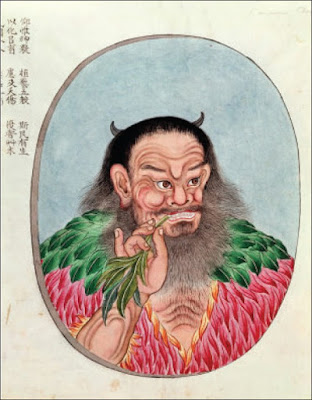 |
| Emperor Shen Neng of China |
It was in China where it reached it’s full potential as a cultivated crop. They led the way, around 6,000 BC, the economies of some parts of China were massively influenced by cannabis and its produce. Rope, oils, paper, flowers - you name it, they traded it!
One of the first documented uses of cannabis, goes back to 2,737 BC, thanks to Emperor Shen Neng of China, who used marijuana tea.
The years have seen the plant be valued for its use in fibre and rope, as food and for its psychoactive properties for religious and recreational use.
The earliest restrictions on cannabis were reported in the Islamic world by the 14th century, and it began to be restricted in the colonial countries during the 19th century. and was often associated with racial and class stresses.
In the late 1800's, several countries in the Islamic world and its boundaries banned cannabis, with Egypt banning the importation of the plant in 1879.
in 1890, Morocco strictly regulated the cultivation and trade of cannabis and Greece banned it. More countries continued to ban cannabis at the start of the 20th century, for the United States, the first restrictions came in 1906 (in District of Columbia).
In the middle of the 20th century, international coordination led to sweeping restrictions on cannabis throughout most of the globe.
 |
| Hemp processing 19th century |
INDUSTRIAL HEMP PROCESSING
Industrial hemp is one of the oldest cultivated crops on earth. The fibres surrounding the woody stem of the cannabis plant are the strongest natural plant fibre in existence, and are one of the many advantages of industrial hemp. It has provided raw materials for all sorts of products, including; rope, sandals, kimonos and water bags. Hemp textiles were very popular because the fibres were so strong.
Hemp has been processed in the same way for centuries. Once the crop has been harvested, the flowers, seeds and leaves are removed by beating the plants with sticks.
The stems are then allowed to decompose slightly by leaving them on the ground, to become wet with dew each morning, this causes the fibre to separate from the woody core. The moist stems are bundled up and placed to dry.
The stems are then allowed to decompose slightly by leaving them on the ground, to become wet with dew each morning, this causes the fibre to separate from the woody core. The moist stems are bundled up and placed to dry.
 |
| Harvesting Hemp crops |
During the breaking of the hemp, a wooden tool known as a 'breaker' pounds and crushes the stems. A flat piece of wood is then used to beat the fibres and remove more woody material.
The last fragments are removed by ‘carding’ - drawing the fibres across a pointed hemp comb. Leaving fibres ready for further processing into thread from which rope or textile can be produced.
Hemp processing for industrial use was hard labour and would take every effort from the whole family, just to earn a living. Although a mechanised process is now used in place of the wooden breakers of yesterday, the basic stages of hemp processing remain the same.
 |
| A peasant in France spins yarn from hemp fibre. |
HEMP SEED OIL
Hemp seed oil was once an essential, everyday part of the average household. Our ancestors’ homes were lit by oil lamps, they used hemp oil based soaps and detergents to wash with. It is a healthy and sustainable product.
When hemp seed is pressed, it produces an oil which can be used for nutritional and industrial products. Because of its versatility hemp seed oil was widely used and a valuable product of hemp farming right up until the early 20th century.
It was used in paints, varnishes, sealants, lubricants for machinery, and printing inks. And some of the worlds greatest artists used oil paints which contained a hemp oil base to create their classic works of art. Hemp seed shows an extraordinary range of variation in its constituent oils, some of which are more useful for industrial purposes than others. There is a great deal of interest at the moment in the potential of using hemp seed oil as a fuel.
HEMP FIBRE
Hemp fibres are among the strongest in the plant world. Humans discovered early on how to fabricate thread, rope and textile from it.
Hemp fibre is an amazingly versatile fibre which can be as strong as an anchor rope or as soft as silk. The oldest examples of woven material that we know of are made from hemp, items of clothing and fabric, such as sandals, ritual robes, bandages and carpets, have been discovered.
Cross-weaving meant that ropes could be made into nets for fishing and hunting. As time passed, and techniques developed, finer meshes were created, until the net eventually developed into true woven cloth.
In ship building, hemp was the second most used material after wood and was a crucial part in the exploration and expansion across the world. The fibres from the plant were used to make many items such as, sails, ropes, rigging and cloths.
As well as these the hemp fibres were also mixed with tar and spread between the seams of the ships hulls in order to make them water tight. in a process known as ‘caulking’. No other natural fibre can withstand the forces of the ocean and salt water as well as hemp does.
Christopher Columbus would have never reached or discovered the shores of the New World without hemp!
New synthetic materials became largely popular with the clothing industry during the 20th century. But, in the last few decades there has been a slight shift in this, as the environmentally sustainable properties of hemp are being acknowledged once again.
Hemp production is much less ecologically damaging. As well as this clothes made from hemp are strong and tend to last much longer than other fabrics. They can also be made as light and soft as cotton, it is highly absorbent, making it ideal for shoes.
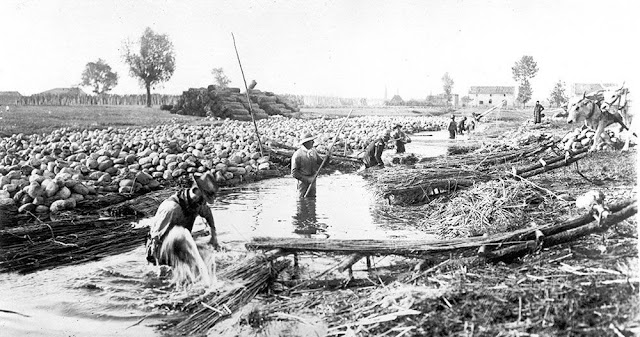 |
| Retting of the hemp |
HEMP-BASED PLASTIC
Hemp plastic is the number one material of the future. Door panels of certain series of BMW, Mercedes and Bugatti are manufactured using a hemp fibre basis.
They are lightweight, biodegradable and can replace many chemically made plastics. Hemp plastics can reduce the greenhouse effect, and helps with combating global warming, where as the production of petrochemical plastics, generates high CO2 emissions and toxic bi-products.
Hemp plastic is not a new discovery. Hemp was essential to the very first plastics because of its high cellulose content. The famous car manufacturer Henry Ford swore by the plant:
"Why use up the forests which were centuries in the making and the mines which required ages to lay down, if we can get the equivalent of forest and mineral products in the annual growth of the hemp fields?"
In 1941 Ford produced a prototype that showed the great potential of using hemp alongside innovative technology. Ford demonstrated the strength of the hemp composite by beating the car with a club and leaving no dents in the bodywork.
The amount of hemp plastic products available today is somewhat limited, due to the restrictions on growing industrial hemp across most of the world. In spite of this, there are companies that do successfully market CD and DVD sleeves, scooters, consumer electronics, designer chairs and even musical instruments made from hemp plastic.
One of the most notable uses of hemp plastic is the door panels and back shelves of certain cars made by BMW, Mercedes-Benz and Bugatti, all of which are made from hemp fibres. Ford's dreams are coming true after all!
The amount of hemp plastic products available today is somewhat limited, due to the restrictions on growing industrial hemp across most of the world. In spite of this, there are companies that do successfully market CD and DVD sleeves, scooters, consumer electronics, designer chairs and even musical instruments made from hemp plastic.
One of the most notable uses of hemp plastic is the door panels and back shelves of certain cars made by BMW, Mercedes-Benz and Bugatti, all of which are made from hemp fibres. Ford's dreams are coming true after all!
CANNABIS AND RELIGION
Cannabis was (and is) a sacred plant for many and has been used in religious ceremonies for many cultures, throughout history. It is one of the most important plants to be referred to as sacred by man. When the cannabis is used in religious ceremonies and practices, it is stated as sacramental.The connection between cannabis and religion most probably began being used as ceremonial incense. When thrown upon a fire or smoldering coals, clouds of smoke would be let off and inhaled by those present.
A famous report by the Greek historian Herodotus, which was written around 440 BCE, told of ancient funeral ceremonies practiced by the Scythians, (a nomadic tribe from central Asia).They would sit in closed tents where cannabis seeds were thrown onto hot stones to smolder. It is highly probable that the seeds still carried enough pollen-bearing plant matter to give a psychoactive element to the smoke, as Herodotus writes that inhaling the fumes causes them to “shout for joy”.
In western China, in the grave of a shaman dated to 2700 BCE, the flowers of a psychoactive strain of cannabis were found along with seeds, stems and leaves.
The flowers and seeds, weighing a total of 789 grams, had been placed in a basket and a bowl which were laid beside the head and feet of the shaman.
According to legends in India, Goddess Parvati first recommended 'bhang' (a narcotic drink made with the leaves of the female cannabis plant) to Lord Shiva after he had sucked up poison to protect everyone from it. The poison apparently turned Shiva’s throat blue, earning him the name Neelkanth.
Shiva is said to have chosen cannabis as his favourite food, later 'bhang' was used to cool him down during the summer months. This made him into a cross-generational poster boy for cannabis. His image today is the main motif of the Goa trance scene.
The use of cannabis a religious sacrament predates written history and evidence of it use as a sacred plant can be found in most ancient religions, including Buddhism, Shintoism, Sufism and Christianity and among the Bantu, Pygmy, Zulu and Hottentot tribes of Africa. Some modern religions still practice the ceremonial consumption of cannabis, for example Rastafari.Although it may seem, and many people assume that CBD is a new and innovative supplement, but as we can see the history of CBD actually goes back much further.
The interesting history of the hemp plant goes back thousands of years. But history of its compound CBD began in 1940, when Roger Adams successfully extracted CBD from the Cannabis sativa plant. He wasn't aware he had done so until years later, when he along with other scientists realised what he had done they began researching the possibilities of CBD.
And in 1946, Dr. Walter S. Loewe proved that CBD doesn’t cause an altered mental state and has no psychoactive properties. Further research continued throughout the 1960's and finally, the first CBD oil was released by the British Pharmacopoeia.THE FUTURE OF CBD
Studies continued over the next few decades, and today, the stigma surrounding CBD is starting to fade as people are finally beginning to open up. The popularity of CBD is growing rapidly as more and more people are introducing the food supplement into their daily lives.Scientists around the world are still researching CBD and conducting experiments in order to find out more about this compound. No one knows for sure what the future will bring for CBD, but we are optimistic that its a promising one.
If you are thinking of introducing CBD into your life, because each person’s needs are different, we encourage you to do your own research to see if CBD oil is right for you.

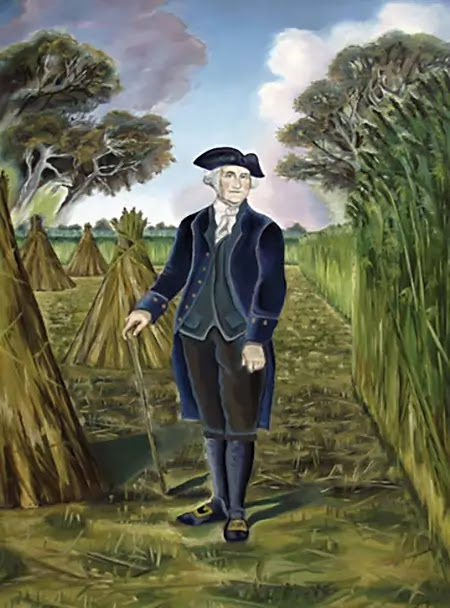

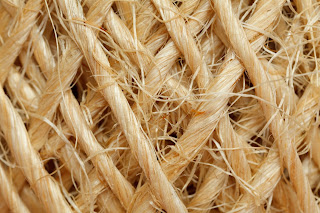
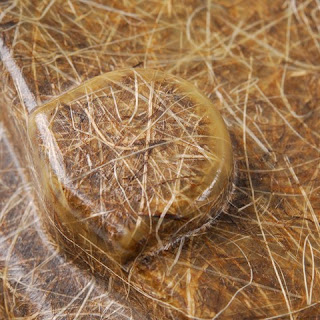




Comments
Post a Comment